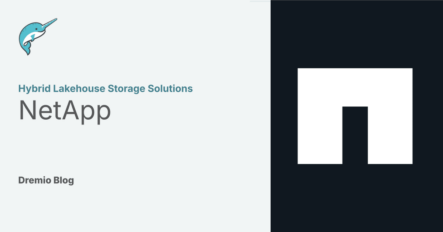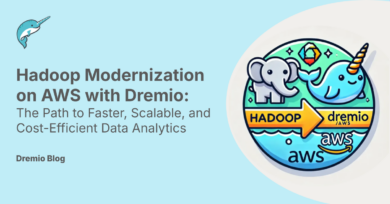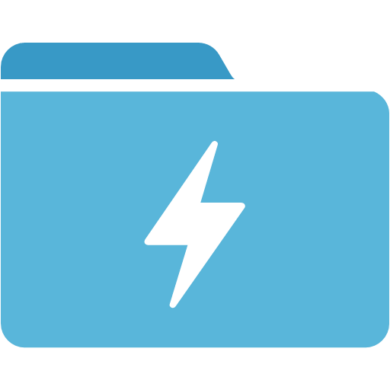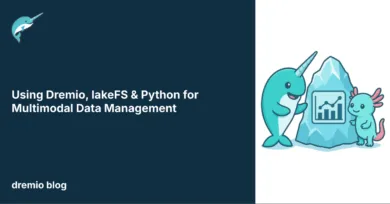
The data lakehouse is an architectural pattern that leverages storage layers like Hadoop or object storage as the center of gravity for data. Using tools like Dremio, you can create a decoupled, modular data warehouse. The key component connecting platforms like Dremio to your data lake is a data lakehouse table format such as Apache Iceberg. This enables your data lake to be treated as database tables with all the same ACID guarantees.
Data Lakehouses provide:
- Cost Savings: Fewer copies of your data and less compute required for ETL pipelines.
- Flexibility: Multiple tools can operate on a single copy of your data.
- Reduced Time to Insight: With minimal data movement, you can deliver data to BI dashboards and AI/ML models more quickly.
Beyond the inherent benefits of the data lakehouse architecture, the specific tools you use to construct it can further enhance these advantages. Two primary components are the data lakehouse platform and the storage layer.
Dremio, a data lakehouse platform, maximizes the benefits of the data lakehouse in three key ways:
- Unified Analytics: Dremio unifies your data lakehouse with other data sources like databases and data warehouses. It includes an integrated semantic layer for defining your data models and metrics across all your data.
- SQL Query Engine: Dremio boasts a best-in-class SQL query engine that delivers industry-leading price/performance for running queries across all your data sources.
- Lakehouse Management: Dremio automates the processes needed to maintain and optimize your data lakehouse tables. It also offers an enterprise catalog with Git-like features for unique data quality management.
While Dremio serves as the data lakehouse platform, your storage layer can also bring many unique features and added value to your overall lakehouse architecture. Let's highlight one of these exceptional storage solutions.
What is NetApp?
NetApp is a leading provider of data management solutions, renowned for its high-performance, scalable, and secure storage solutions. NetApp's products are designed to handle vast amounts of unstructured data efficiently, making them ideal for modern hybrid Iceberg lakehouse architectures.
In today's data-driven landscape, enterprises are constantly seeking innovative solutions to efficiently manage, store, and analyze their growing volumes of data. NetApp has partnered with Dremio to deliver an integrated hybrid Iceberg lakehouse platform that enhances the capabilities of modern data lakes. This collaboration combines NetApp's robust storage solutions with Dremio's powerful data lakehouse platform, enabling organizations to unlock the full potential of their data.
NetApp StorageGRID is a scalable, high-performance object storage solution designed to manage massive amounts of unstructured data. When integrated with Dremio, this solution accelerates data analytics, providing a seamless experience for users. The combination of StorageGRID and Dremio ensures that data is readily accessible, highly secure, and efficiently managed, making it an ideal choice for enterprises looking to enhance their data capabilities.
Advantages of the NetApp StorageGRID and Dremio Hybrid Lakehouse
Enhanced Performance and Scalability: NetApp StorageGRID offers exceptional scalability and performance, enabling organizations to store and manage petabytes of data effortlessly. When paired with Dremio's query acceleration technology, users experience significant performance improvements, making data analytics dramatically faster and more efficient.
Seamless Data Management: The integration of NetApp and Dremio simplifies data management by providing a unified platform for storage and analytics. StorageGRID’s ILM policy engine allows easy management of large data lakehouses. When combined with Dremio, it eliminates the need for multiple, disjointed systems, reducing complexity and streamlining operations.
Cost Efficiency: By leveraging the combined capabilities of NetApp and Dremio, organizations can optimize their storage and analytics costs. The integrated solution minimizes data movement and duplication, and reduces ongoing management costs, leading to cost savings and improved resource utilization.
Try Dremio’s Interactive Demo
Explore this interactive demo and see how Dremio's Intelligent Lakehouse enables Agentic AI
Real-World Impact: Accelerating Big Data Analytics
Background: NetApp's Active IQ platform is a digital advisory tool that simplifies and proactively manages the customer experience across NetApp’s suite of services. It processes over 10 trillion data points per month from customer environments and data operations. Initially built on a Hadoop/MapReduce-based infrastructure, Active IQ faced challenges with data management, scalability, and performance as data volumes grew rapidly.
Challenges: NetApp's Active IQ platform faced significant challenges with its outdated Hadoop/MapReduce infrastructure. The primary issue was the inability to scale storage independently from compute resources. This coupling meant that whenever additional storage was needed, compute resources had to be scaled simultaneously, leading to unnecessary costs and increased complexity. This approach resulted in over-provisioning of compute resources, higher hardware costs, and increased licensing fees.
Solution: NetApp transitioned from its legacy Hadoop environment to a modern lakehouse environment built on StorageGRID and Dremio. This integration decoupled storage and compute, allowing for more efficient resource utilization. Dremio's platform provided a unified access layer, enabling seamless data discovery and exploration without data duplication.
Results: NetApp achieved a 95% reduction in query time, cutting it down from 45 minutes to just 2 minutes. Additionally, they reduced their data storage needs from over 7 petabytes to 3 petabytes and decreased compute resource requirements significantly
Technical Integration: How It Works
The technical integration between NetApp and Dremio is achieved through a series of APIs and connectors enabling seamless communication and data exchange. Here's an overview of the integration process:
- Data Ingestion: Data is ingested into NetApp StorageGRID, where it is securely stored and managed.
- Data Synchronization: Dremio connects to StorageGRID using its native connectors, synchronizing data in real-time to ensure the latest information is always available for analysis.
- Query Acceleration: Dremio's query engine accelerates data retrieval and processing, enabling users to perform complex analytics on large datasets quickly and efficiently.
- Unified Management: Both NetApp and Dremio provide unified management interfaces, allowing administrators to oversee data storage, access controls, and analytics from a single pane of glass.
Customer Benefits
Organizations that adopt the NetApp and Dremio integrated solution can expect numerous benefits:
- Improved Data Accessibility: Ensure that critical data is always accessible to users, enabling faster and more informed decision-making.
- Enhanced Security and Compliance: Leverage NetApp's robust security features and Dremio's governance capabilities to protect sensitive data and comply with regulatory requirements.
- Operational Efficiency: Simplify data management and analytics operations, reducing administrative overhead and freeing up resources for strategic initiatives.
- Scalability and Flexibility: Easily scale storage and analytics capabilities to meet the evolving needs of the organization without compromising performance.
Conclusion
The Dremio and NetApp partnership represents a significant advancement in data management and analytics. By integrating NetApp StorageGRID with Dremio's data lakehouse platform, organizations can achieve unparalleled performance, scalability, and efficiency in their data operations. This powerful combination empowers enterprises to unlock the full potential of their data, driving innovation and growth in today's competitive landscape.
Want to learn about how to implement Dremio and NetApp for your Data Lakehouse? Contact Us!


